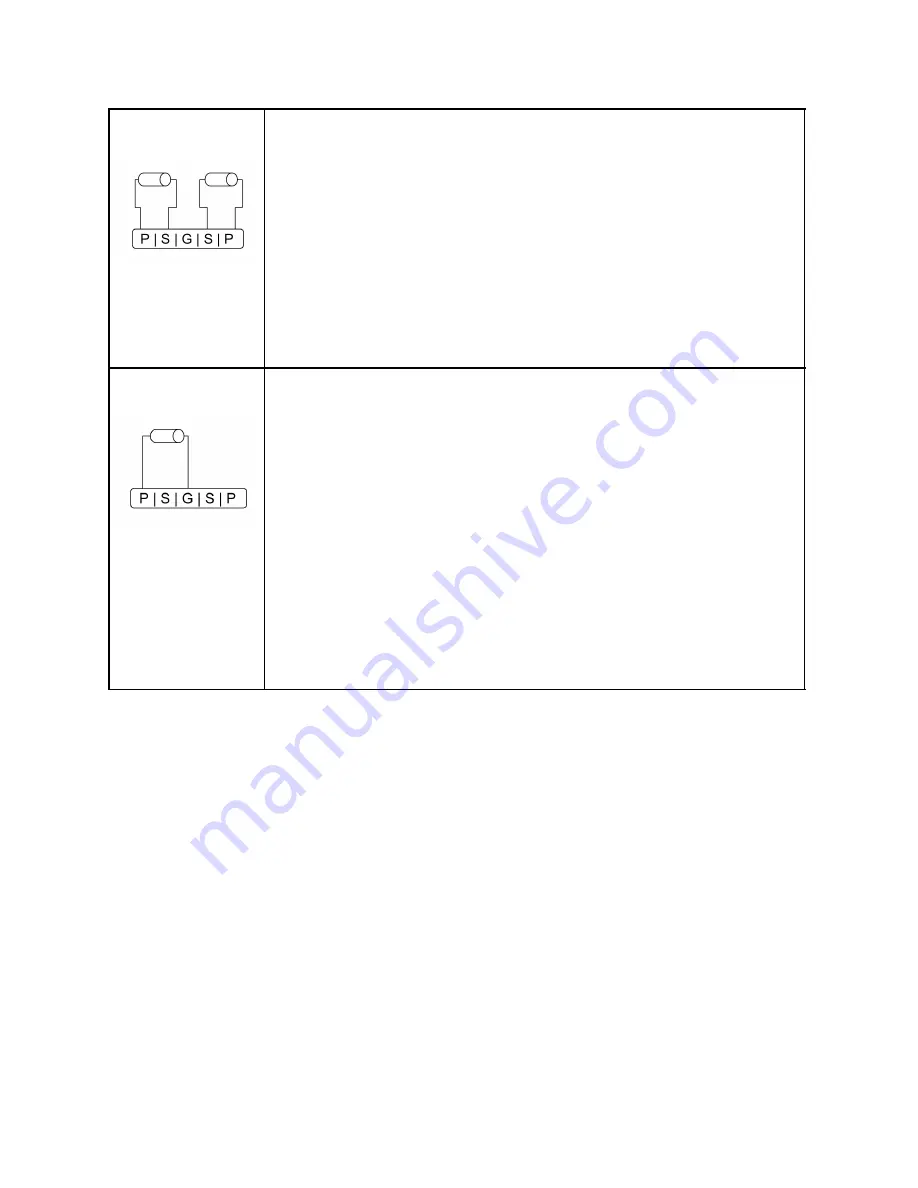
Serial (S)
This is used for putting two components in series, the
combination of which will then be in parallel to the
feedback circuit.
Put the first of the two components from P to S and the
other one from the other S to the other P. Both of the S
ports on either row are interconnected (as visualized by
the
half circles on the front panel graphics), so a
series connection will be made between the components.
You could e.g. put a resistor between P and S on the left
side, and an LED between S and P on the right side.
Ground (G)
This is for components that should go from the feedback
circuit to ground. In this case, components should be
placed in such a way that one of their legs connects to
any P port and the other connects to a G port.
In case two components should go to ground in series,
connect the first one between a P and an S port and the
second one between the other S port on the same row and a
G port. In case two components should go to ground in
parallel, connect either of them to one of the P ports
and both of their other legs to a G port.
Accidentally shorting from P or S to ground will not harm
your component or the module, as the circuit is protected
by a 1k resistor to ground.
Modifier Port Patch Ideas
●
Diodes or LEDs work well in parallel, especially if using two different
diode types while their polarities are opposite each other, so e.g. a
Schottky diode on port row 1 and an LED in reverse on port row 2.
●
Light-dependent resistors (LDRs) can be used. Put an LDR in parallel
and change the amount of light it receives (either by shining a light
on it or using your hand to cover it in a well-lit room). You can also
put an LDR in series with a diode in order to adjust the amount of
effect the diode has.
●
You may use an LED in conjunction with an LDR, in various combinations.
Place the LED close to the top of the LDR, so the light from the LED
modifies the LDR’s resistance.
●
Capacitors to ground give sonically interesting results, as they will
bleed high frequencies from the feedback loop, resulting in harmonics
created in the resulting audio signal.
























